This simplified Hybrid Athlete running workout plan identifies the most effective training techniques for runners who are just starting out or looking to take their performance to the next level. Learn how to design a training plan, the importance of strength training and how to recover from workouts.
Getting Started
For runners preparing for an upcoming race or running as part of a general exercise routine, it is important to develop a plan to track progress and continually improve performance. To accomplish this task, you should begin the process by accessing your current level of fitness and selecting your desired goals or outcome, then creating a plan for success based on this criterion.
If preparing for a specific event or race, be sure to begin your program far enough in advance to allow for a safe build up in mileage and intensity. Using a training plan to schedule workouts and monitor performance will prepare the mind and body for the rigors of race day.
In order to maintain a healthy cardiovascular system, The American College of Sports Medicine recommends at least 30 minutes of moderately intense cardiovascular exercise five days a week, or 20 minutes of vigorous cardiovascular exercise 3 days a week. To achieve this baseline, one may choose to include running, cycling, swimming, rowing, or hiking in their exercise regimen.
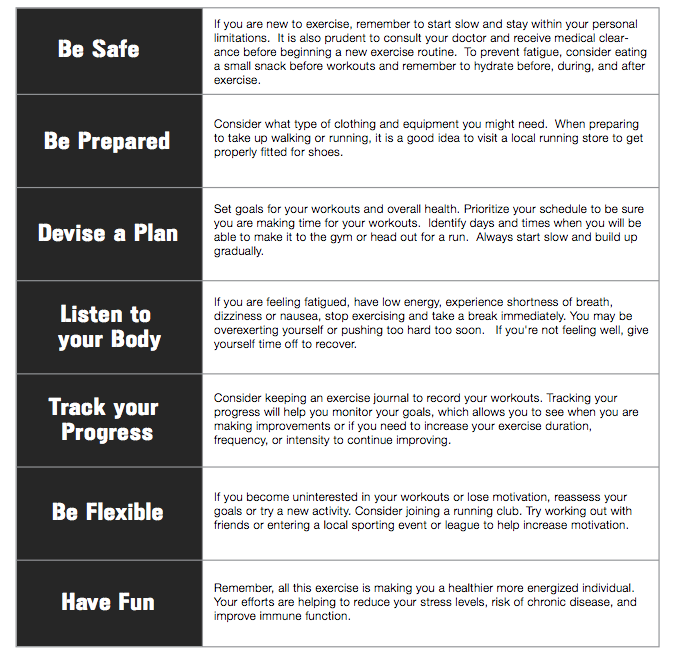
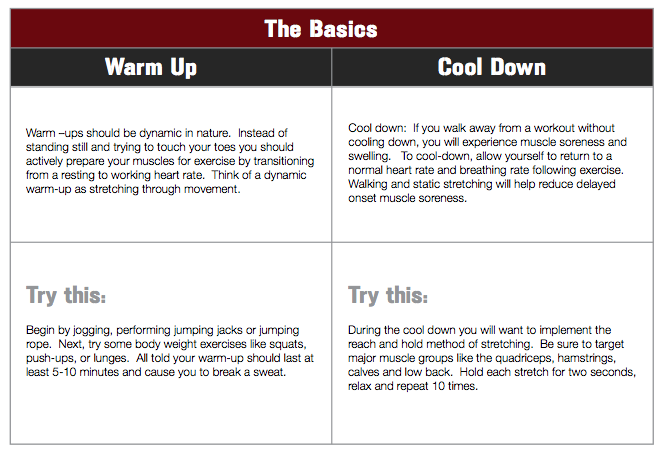
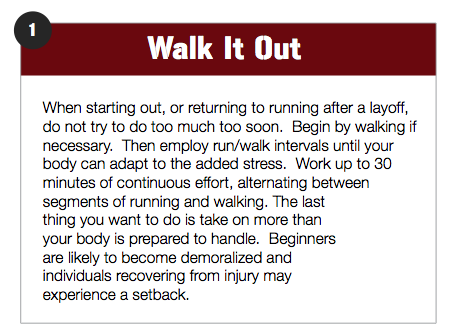
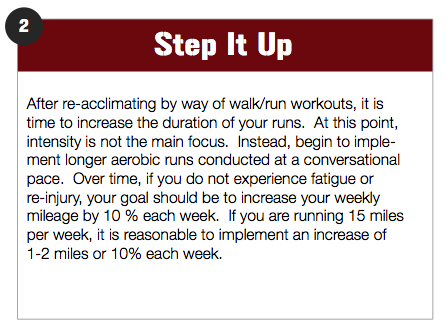
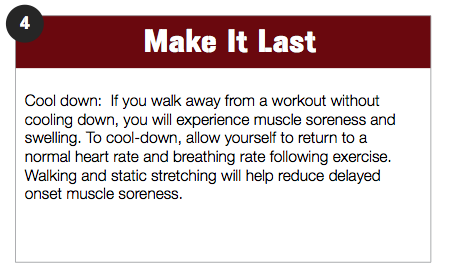
Developing a Training Plan:
A well structured training plan will feature a general conditioning phase that focuses on improving overall fitness, while preparing the body for more rigorous exercise. Next, the base phase will present a steady increase in duration or volume of training runs to safely prepare the body to cover longer distances.
Moving on to the build phase, the most significant change will come in the form of intensity. In your run specific program this should include track based speed workouts, interval sessions and/or hill sprints. Finally, if you are using a training program in preparation for a specific event, there should be peak and taper phases that allow for fine tuning with respect to performance and conditioning, while decreasing training volume and intensity in the lead up to a race.
Programming Training Sessions:
Depending on your goals, the amount of time you are committing to training and the type of event you are training for the number of training sessions per week will vary. For general fitness, 1-3 days per week of consistent running is reasonable. For, an individual preparing for a specific event like a marathon, it may be necessary to run up to 5 days a week logging over 30 miles in a given week.
After establishing a cardiovascular base and consistent training schedule your training sessions should include a mix of long runs, hill intervals, tempo runs, speed intervals, social runs and cross-training workouts into your training program. Training in this manner will add variety to your training sessions keeping you motivated and constantly improving.
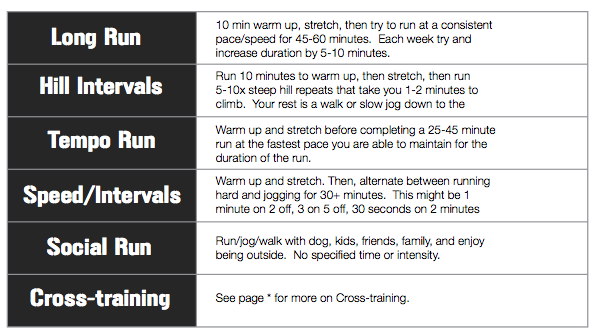
Steady State vs. Interval Training
Running as a means to improve overall fitness can differ significantly from running in preparation for an endurance event. Long distance, steady state cardio is required to build stamina allowing the body to sustain performance over an extended period of time. Conversely, running to improve fitness or lose weight is best accomplished with interval training techniques.
This section details the pros and cons of steady state and interval training, and then goes on to provide examples of interval training techniques.
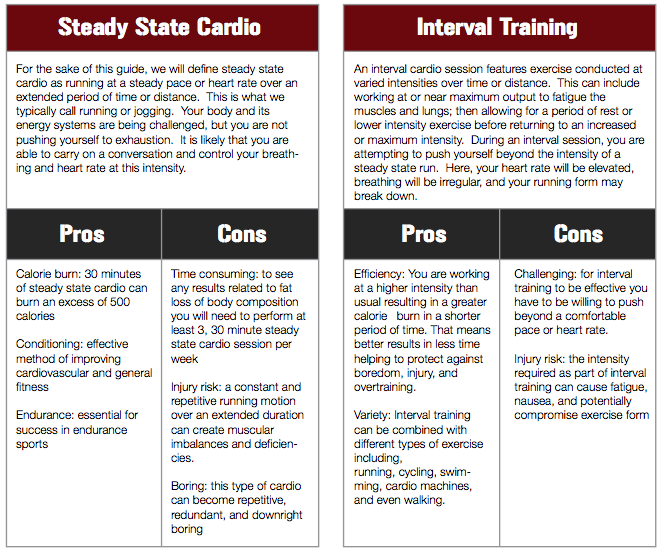
Combing Cardio and Resistance Training
Studies have shown that 15 minutes of cardio intervals before your strength workout, followed by another 15 minutes after the workout will significantly increase calorie burn, maximum heart rate, and release of muscle building growth hormone. Instead of simply performing traditional cardio intervals or Fartlek’s on the treadmill, with periods of max effort followed by walking or jogging, fill the rest periods with a strength training exercise. After a proper warm-up, a sample workout would include 6 rounds of 60 second sprints on the treadmill. After your sprint perform 15 push-ups in round 1, 15 dumbbell shoulder presses in round 2, 15 body-weight squats in round 3, up to 10 pull-ups in round 4, 10-15x triceps dip in round 5, and 5 lunges each leg in round 6.
Recreational Activities
Consider replacing running or the elliptical with recreation sports like soccer, pick-up basketball, or swimming. Recreation means fun and there is no reason your cardiovascular training cannot be enjoyable. However, I will offer a word of caution; soccer, basketball, and swimming might be more challenging than you think. You will be performing intervals (start and stop during soccer and basketball), plyometrics (jumping and lateral movement in basketball), and recruiting different muscles and energy systems (while swimming) than you are accustomed to.
Fasted Morning Cardio
To maximize your calorie burn and the utilization of stored fat as energy, consider adding fasted morning workouts to your training routine.
Start by having your last meal 2 hours prior to bedtime. Upon waking up in the morning, have a glass of water before throwing your shoes on and heading out for a training session. This session can include a short and intense strength workout or a steady state cardio effort of 30-45 minutes.
Training in this manner can help to improve mobilization of fatty acids during exercise and increase insulin sensitivity afterwards. This means you’re your body will have a positive hormonal response to your training, creating an environment that encourages the body to burn stored fat as a fuel source.’
Additional Considerations
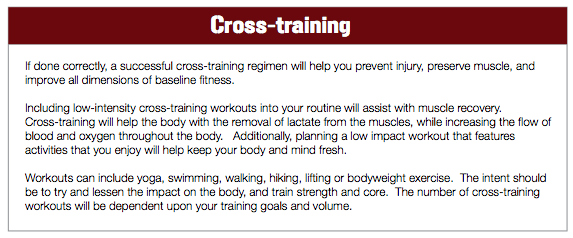
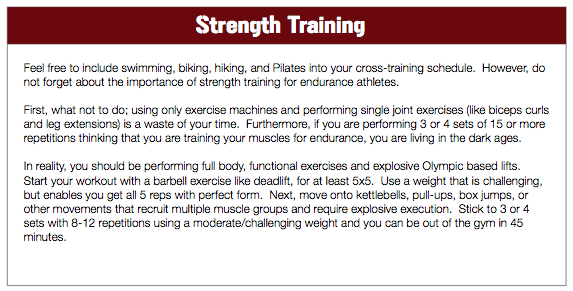
Recovery
Use these recovery techniques to minimize muscle soreness, reduce the likelihood of injury, and prepare your body for the next training session.
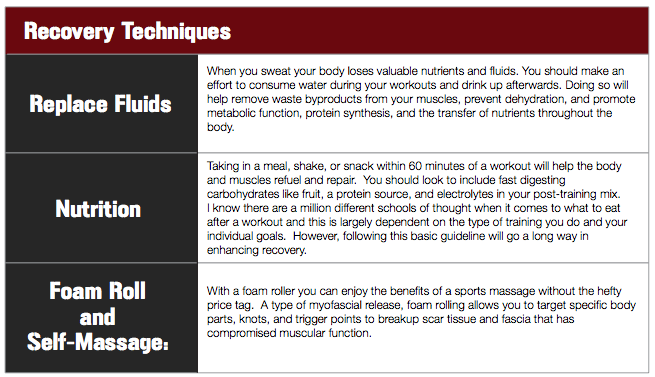
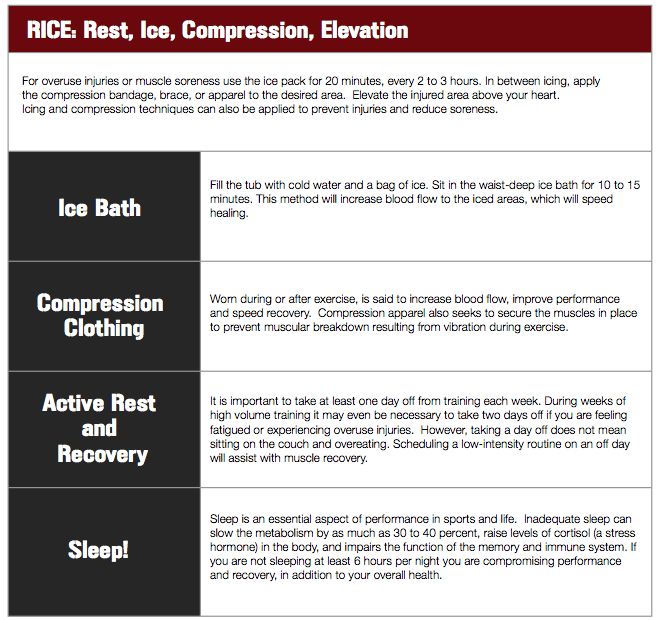
Conclusion
Running can change your life if you commit to it. Like all verticals of fitness, commitment, dedication, and discipline go a long way. Make running part of your simplified fitness routine and you are on your way to becoming a Hybrid Athlete.
Joe is a writer, trainer and fitness entrepreneur who co-founded Hybrid Athlete LLC, Kettlebell Cardio™ and Race Day Domination. Currently building @fittinsider, a platform for founders, executives, & investors redefining fitness/wellness. Investing in health/fitness companies

